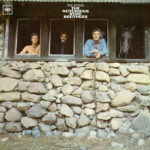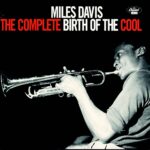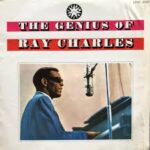 Arctic Monkeys’ debut album, “Whatever People Say I Am, That’s What I’m Not,” released in 2006, is a seismic force that shook the music landscape and solidified the band’s place as one of the most important and influential rock bands of their generation. With their distinct blend of indie rock, punk, and observational storytelling, the album captures the essence of youth culture and urban life in Northern England, delivering an electrifying and raw musical experience.
Arctic Monkeys’ debut album, “Whatever People Say I Am, That’s What I’m Not,” released in 2006, is a seismic force that shook the music landscape and solidified the band’s place as one of the most important and influential rock bands of their generation. With their distinct blend of indie rock, punk, and observational storytelling, the album captures the essence of youth culture and urban life in Northern England, delivering an electrifying and raw musical experience.
The album opens with the blistering “The View from the Afternoon,” setting the tone with its relentless energy and explosive instrumentation. Lead singer Alex Turner’s distinctive Sheffield accent shines through, giving the lyrics an authentic and gritty edge that perfectly complements the album’s themes.
Tracks like “I Bet You Look Good on the Dancefloor” and “Fake Tales of San Francisco” showcase the Arctic Monkeys’ infectious hooks and razor-sharp lyrics. Turner’s storytelling prowess is evident throughout the album, with songs that vividly paint pictures of late-night escapades, youthful rebellion, and the trials and tribulations of modern life.
One of the standout tracks is “Mardy Bum,” a melodic and heartfelt ballad that highlights Turner’s ability to craft emotionally resonant songs. The song’s tender lyrics and soulful delivery add a layer of depth and vulnerability to the album’s more raucous tracks.
The Arctic Monkeys’ musicianship is on full display throughout the album. The tight and dynamic rhythm section, consisting of drummer Matt Helders and bassist Andy Nicholson (later replaced by Nick O’Malley), provides a solid foundation for the band’s sound. Guitarist Jamie Cook’s distinctive riffs and Turner’s skillful guitar work create a potent and memorable sonic landscape.
“Whatever People Say I Am, That’s What I’m Not” is not just a collection of catchy songs; it’s a concept album that offers a glimpse into the lives of young people in England’s working-class communities. Tracks like “When the Sun Goes Down” and “Riot Van” delve into social issues, depicting the harsh realities and struggles faced by the characters in the stories.
The album’s production, overseen by Jim Abbiss, perfectly captures the raw energy and frenetic spirit of the band’s live performances. The DIY ethos and no-frills approach contribute to the album’s authenticity and make it feel like a snapshot of a band on the cusp of greatness.
While “Whatever People Say I Am, That’s What I’m Not” is celebrated for its brilliance, some critics may argue that the album’s intensity and straightforwardness limit its sonic range. However, it is precisely this unfiltered and unapologetic approach that gives the album its charm and makes it a seminal work of the indie rock genre.
In conclusion, Arctic Monkeys’ debut album, “Whatever People Say I Am, That’s What I’m Not,” is a seismic and game-changing record that captures the essence of youth culture and urban life in Northern England. With its razor-sharp lyrics, electrifying instrumentation, and raw energy, the album remains a timeless and essential addition to any rock music collection. It introduced the world to a band with a unique voice and set the stage for the Arctic Monkeys’ ongoing success and evolution as a band.
This post has already been read 348 times!

























